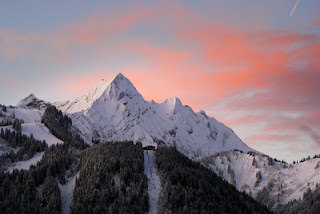Vivitar was a lens re-seller, and the
serial numbers are an indicator who actually manufactured the lens. There is
some difference in optical quality and exterior per manufacturer. You can check
who made your lens on this list.
The serial number on my lens starts with 28
which means it’s made by Komine.
I think this is my favourite telephoto
lens, as it gives quite a considerable reach on DX and it’s my fastest lens
above 100mm. It is relatively light and small, which also makes it a great
portrait lens as people tend to forget that this lens is capable of making a
close-up portrait from a distance.
Handling
the lens
In combination with my D60 this lens is
just right. The weight is equally distributed and the combination is just large
enough to stabilise it properly. As with most other 3rd party
lenses, this lens uses oil to reduce friction when focussing. Although this
generally won’t be a problem, the focus will become stiff when you expose the
lens to low temperatures. However, as I said most 3rd party lenses
from that time are built in the same way, and we can’t blame Vivitar (or
Komine) for this.
Focussing is quite easy with the lens, the
DoF is generally sufficient for minor movements between you and your subject
when you recompose, and my keeper-rate is high enough. However, try to nail the
focus when you make a portrait as the DoF can become quite shallow close-by at
f2.8.
The lens has a metal hood which can’t be
removed from the lens. Although it looks nice I’m not entirely convinced of the
effectiveness of the hood as it doesn’t extend that far from the lens. I would
have preferred if the hood could be removed, as it is hard to attach filters
with the hood extended, and almost impossible to use the Cokin or Lee filter
system, as the hood doesn’t go back far enough to allow the filter holder to
slide over the coupling ring.
Results
As this is a telephoto lens, I generally
use it to fill the frame with remote objects, so I focus relatively close to
infinity. And as I don’t want my shutter to fall below 1/125th I shoot
it wide open quite a lot. And I suspect that most people will, except when they
make portraits of course. Be aware that most lenses won’t show their best
properties when they are focussed at infinity wide open.
The lens needs some sharpening when you
shoot it in these conditions, but after post processing, the images look very
good. And when you close it down to f/4 it’s already much better.
When you focus closer, say you want to make
a portrait, this lens can also be used wide open without much sharpening. I generally
sharpen the eyes a bit, just to make the pop, but it is not a necessity.
As most older lenses, this lens does show
some CA, but this was to be expected for a telephoto lens. And as the CA is
very well within the correctable limits it doesn’t worry me at all. The only
thing that annoys me from time to time is the colour shift you get in the
bokeh. This is especially visible if there is an unsharp part in front and
behind my focus, as the colours can change a bit. Luckily this effect doesn’t show
every time, and it is not that pronounced.
Bokeh is generally quite good. Especially for
portraits the bokeh coming from this lens is nothing short but amazing. However
when you get closer to infinity, and the out of focus areas are just a bit out
of focus and busy, the bokeh can become a bit distracting. But again, we can’t
really blame that on the lens, as a lot more lenses react the same to this
condition.
Conclusion
I am very satisfied with the Vivitar 135mm
f/2.8 lens, because it gives great quality images, is relatively light and
small. This combination makes this one of my favourite telephoto lenses as it
is not a burden to take on a full-day trip, while it still delivers good
images. However keep in mind that there are different manufacturers who are
sold under the Vivitar brand name with different optical qualities. With some
post-processing this lens is able to deliver images I am will to print on the
full resolution my D60 offers me.
One note however, there are a lot of good
135mm’s out there, so don’t pay too much for this lens as there are probably
some good alternatives as well.
Note
If you want to have the full resolution
images, sent me an email, but I don’t like to put up full resolution images on
the internet.











